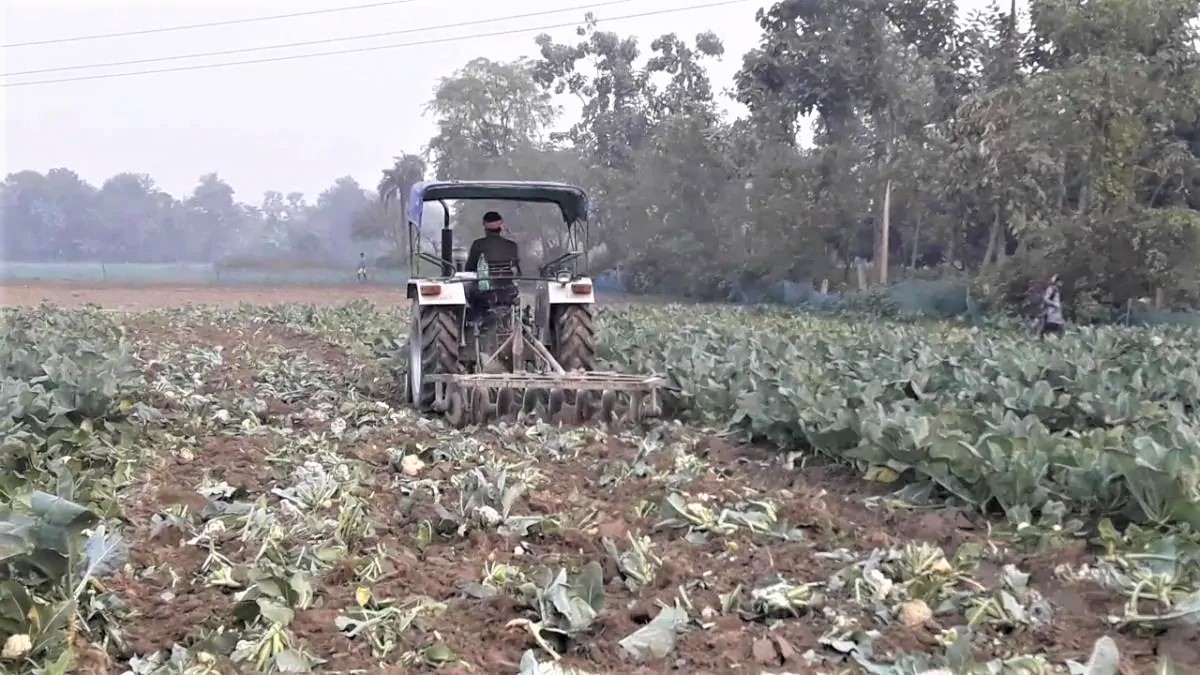When the national capital, under a limited and muzzled media attention, is witnessing protests from farmers having arrived from across the country against the three Farm-laws which can spell doom for the farming community, a different tale of misery and frustration percolated in a village named Muktapur in Samastipur, Bihar.
Om prakash Yadav of Muktapur mauled down his entire farmland with standing crops of Cauliflower. The reason is that his produce of cauliflower was not able to fetch him even a rupee per kg of the produce. Yadav, trying to condense his pain into words, queried rhetorically in hindi, that if one plants a seed at Re 1 and does not get even 50 paise for the output of that seed, what the farmer is then supposed to do.
Cauliflower generally requires deep loamy soil with slight acidic nature (Ph: 5.5-66), which is provided by the alluvial loamy soil profile of Samastipur. The place has supported rabi crops. Wheat, edible oil, and pulses have been grown over such soil profile. The district, apart from Purnia, Munger and Bhagalpur is also known for its Indigo.
Yadav stressed that he had to spend Rs 4000 per katthaa of his farmland for the cauliflower crop. He also added that to harvest the crop, one needs to employ labour who will cut out the cauliflowers from the farmlands, which has its own cost. After that, the produce needs to be packed and taken to market on either bullock carts or other vehicles. Yadav added that after incurring the costs associated with plantation, maintenance, pest protection, labour, packaging, and transportation when the Arhatiyas in the crop- produce market tell that not even a rupee per kg can be given for the Cauliflower produce; that hurts a lot. After Yadav had mauled and destroyed his crops, children from the neighbourhood came and picked up some cauliflowers which could be salvaged from the ruins.
It should be noted that Cauliflower crops had helped many families to earn healthy income which had negated out the need to emigrate from the place in search of corporate jobs. An example in such a case is there in Chakwara village in the Vaishali district of Bihar which had been identified as yellow revolution in the district.
It would be shocking to know that this was not the first time, that Yadav had taken such a drastic step. Earlier he had to face such a situation when there was no buyer for his wheat produce. At that time, he had destroyed the standing crop out of frustration. And the government had compensated him with an amount of one thousand and ninety rupees only.
It must be noted that the AMPC act was abolished in Bihar way back in 2006 which led the private parties to directly purchase from the farmers. The market price of cauliflower hovers at around Rs 45 in various places in Bihar. This should give a hint to what can be the large-scale impacts of the three farm laws which are portraying the all-goodish free-market image without taking into consideration such a dark side to the story for farmers.
Given the overall picture of a neoliberalised crop produce market in Bihar, it can be understood that there is a stark difference in how the same crop translates into either benefit or misery for different farmers in different districts. The vagaries of free market with no intervention from a lackadaisical government can turn out to be unpredictable & dire as in the case of Om Prakash Yadav.





